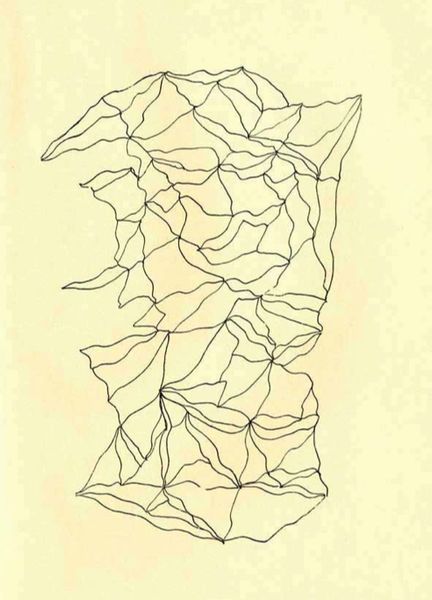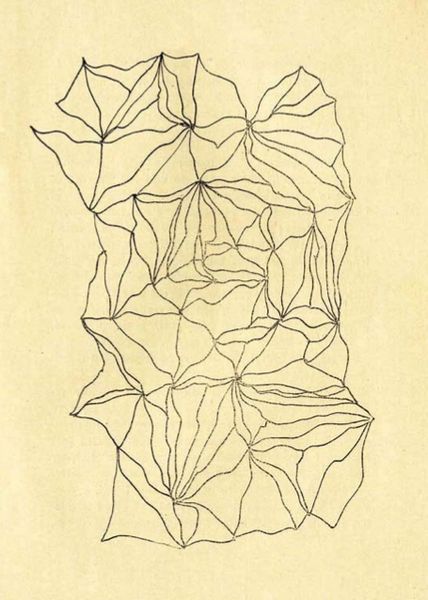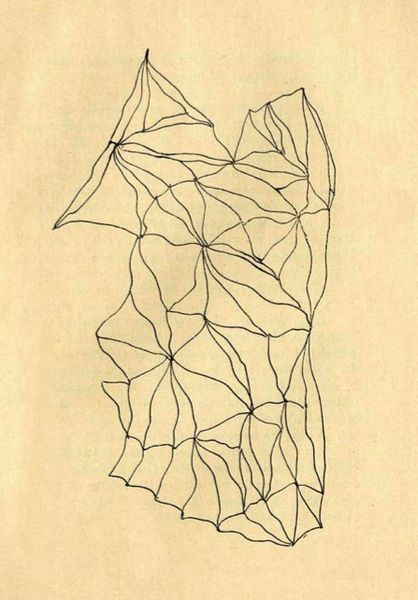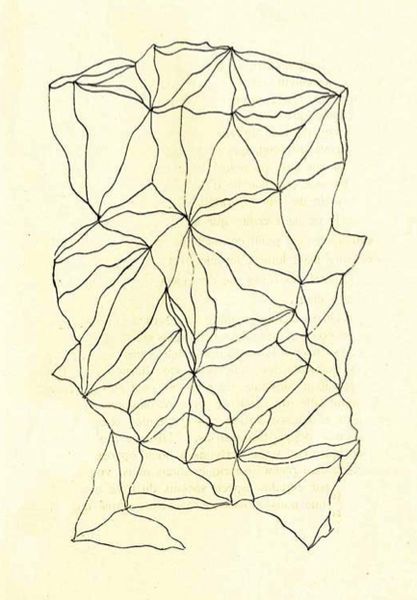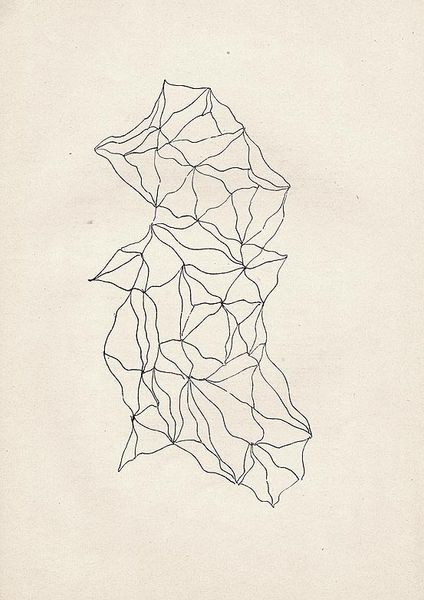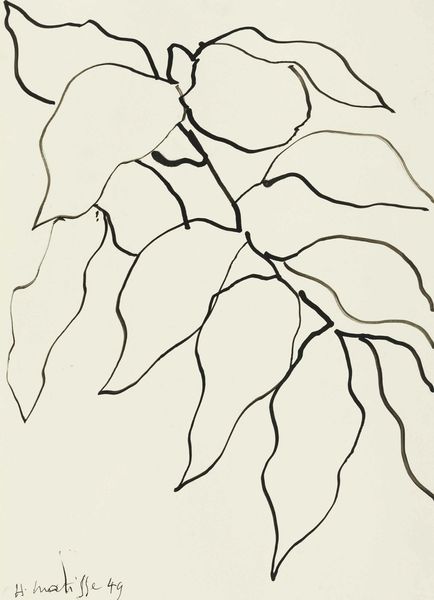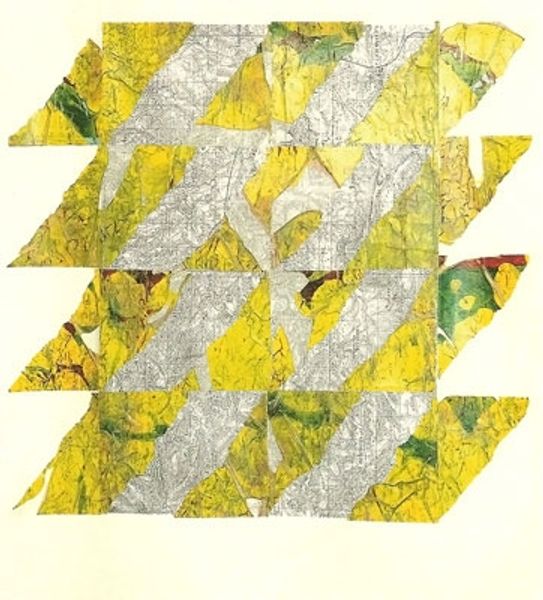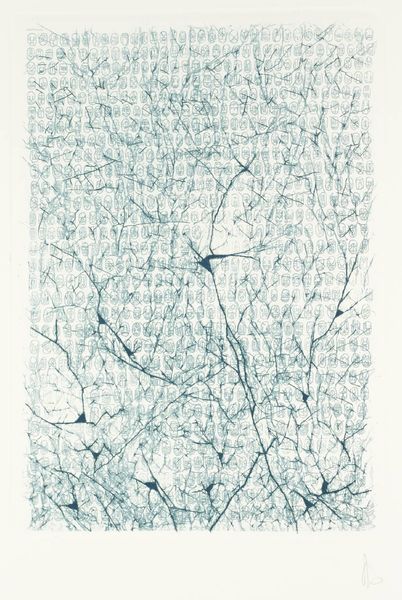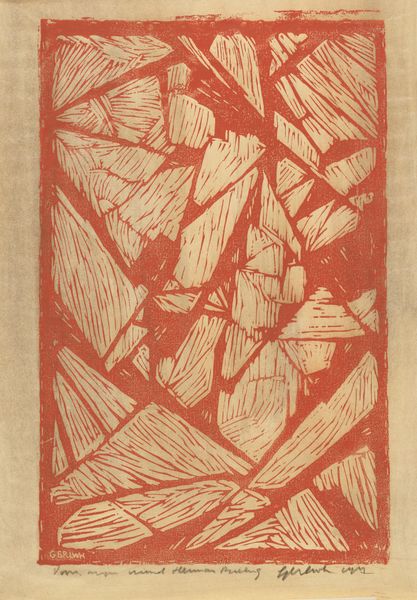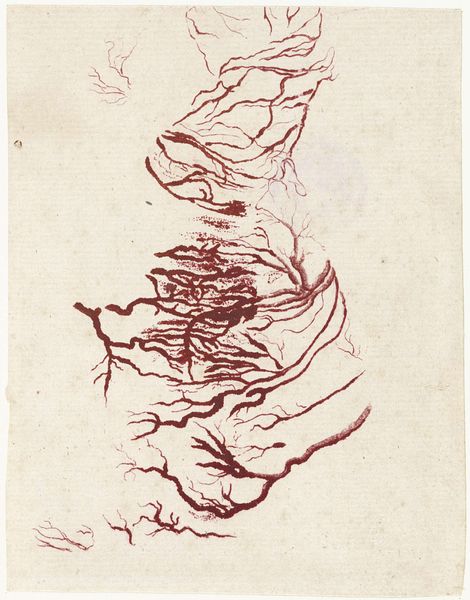
drawing, ink, pen
#
drawing
#
line art
#
ink
#
art-informel
#
abstraction
#
line
#
pen
#
surrealism
Copyright: Dolfi Trost,Fair Use
Curator: We're now looking at Dolfi Trost’s "Entopic Graphomania" from 1945, executed with pen and ink. It is a fascinating example of Surrealist practice. Editor: My immediate impression is one of ordered chaos. The lines, while seemingly random, have a definite structure and rhythm. There is a certain delicate intricacy to the work, though. Curator: It’s interesting that you perceive order, because this technique, "Entopic Graphomania," involved making dots at random and then connecting them with lines. It’s all about chance and automatic drawing, liberating the subconscious. These methods are situated squarely within the historical arc of the Surrealist movement and its anti-rational stance after the traumas of World War II. Editor: Indeed, there is that inherent contradiction—the artist establishing a set of "rules" for a technique meant to evade conscious intention. Look closely at the quality of those lines: thin, wavering. They trace an intriguing network on the paper, forming these somewhat organic, cellular-like forms. There’s an element of visual puzzle, perhaps a map without a territory? Curator: Exactly! That map analogy works nicely, considering the political context in 1945, right after the war’s end and redrawing of national boundaries across Europe. Consider, then, this process as an enactment of abstract world-building. The act of creating becomes a radical gesture against imposed order, even as it inherently reveals a latent human desire to organize and connect. Editor: Even down to the decision to work with simple pen and ink: is that to democratize production, emphasizing accessibility? How do the materials used alter the perception of value and skill embedded within the artwork itself? Curator: Precisely! It bypasses conventional notions of artistic skill to emphasize the unmediated expression of the psyche. This piece shows that surrealism didn't just exist in painting and sculpture but also pushed into drawing as an exploratory act. Editor: This exploration of line and chance offers much, even if lacking obvious figurative anchors, and makes you question just how much "freedom" an artist truly can or should yield to accident and automatism. Curator: This piece urges us to contemplate how social and historical forces shaped even the most personal artistic processes. Editor: A network of subtle lines leaving a resonant impact!
Comments
No comments
Be the first to comment and join the conversation on the ultimate creative platform.
